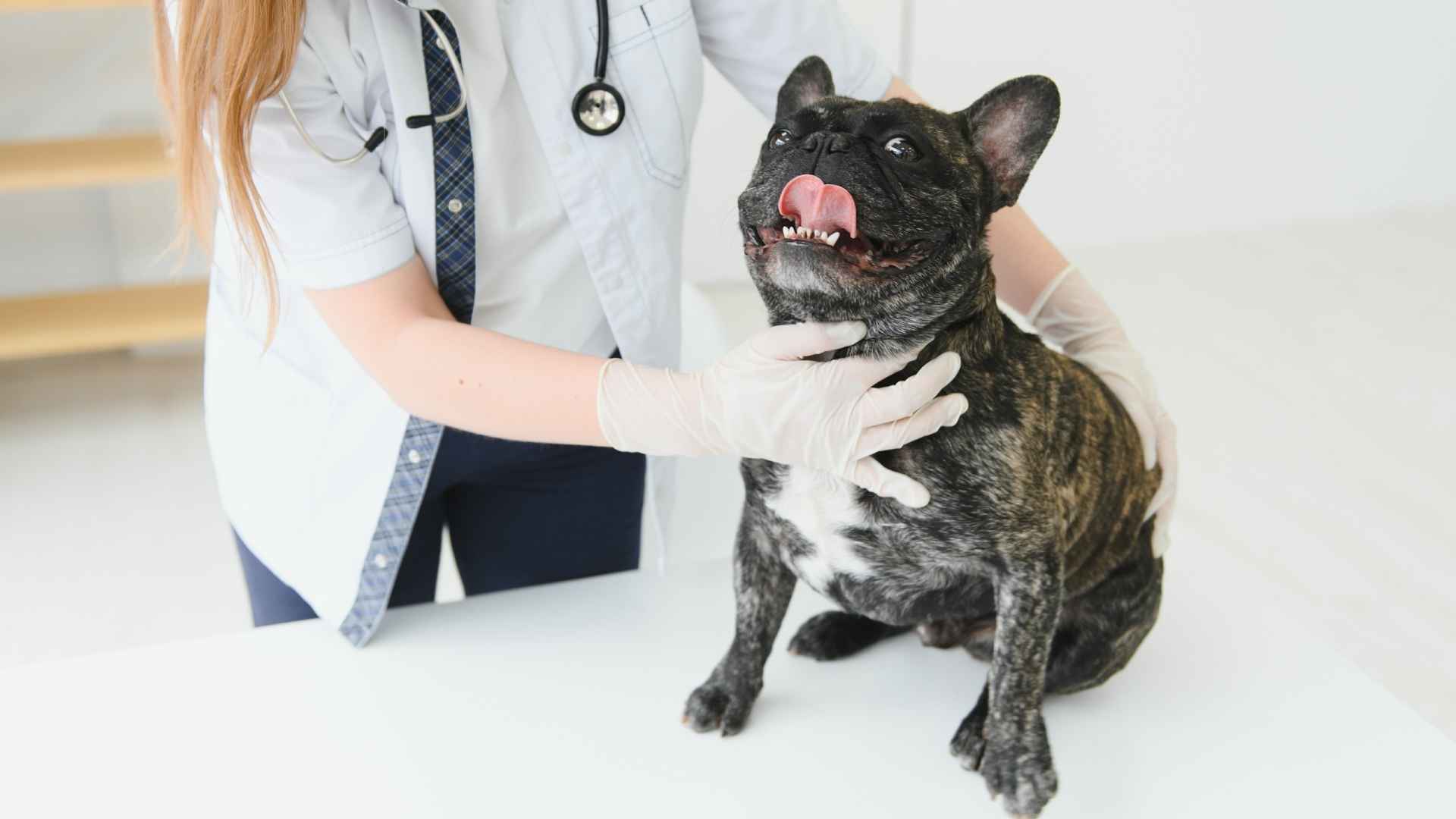Some dogs capture our hearts instantly—big soulful eyes, goofy smiles, tails wagging like metronomes. But behind those adorable faces, certain breeds come with a heavier load: health challenges that require extra love, patience, and care.
These are the breeds that might spend more time at the vet than the average pup, but they reward you with a kind of gratitude and devotion that’s hard to match. Owning one of these dogs isn’t just about walks and playtime—it’s about learning their unique needs, adjusting your lifestyle, and committing to their well-being like family.
From respiratory struggles in flat-faced breeds to joint issues in large dogs, every challenge is also an opportunity to strengthen your bond. We will walk you through the not-so-healthy dog breeds and offer insight into how you can give them the best life possible.
Because when you sign up for a dog, you’re not just getting a pet—you’re taking on a promise. And for these dogs, that promise matters more than anything.
Most Unhealthiest Dog Breeds That Require Extra Care
1. English Bulldog
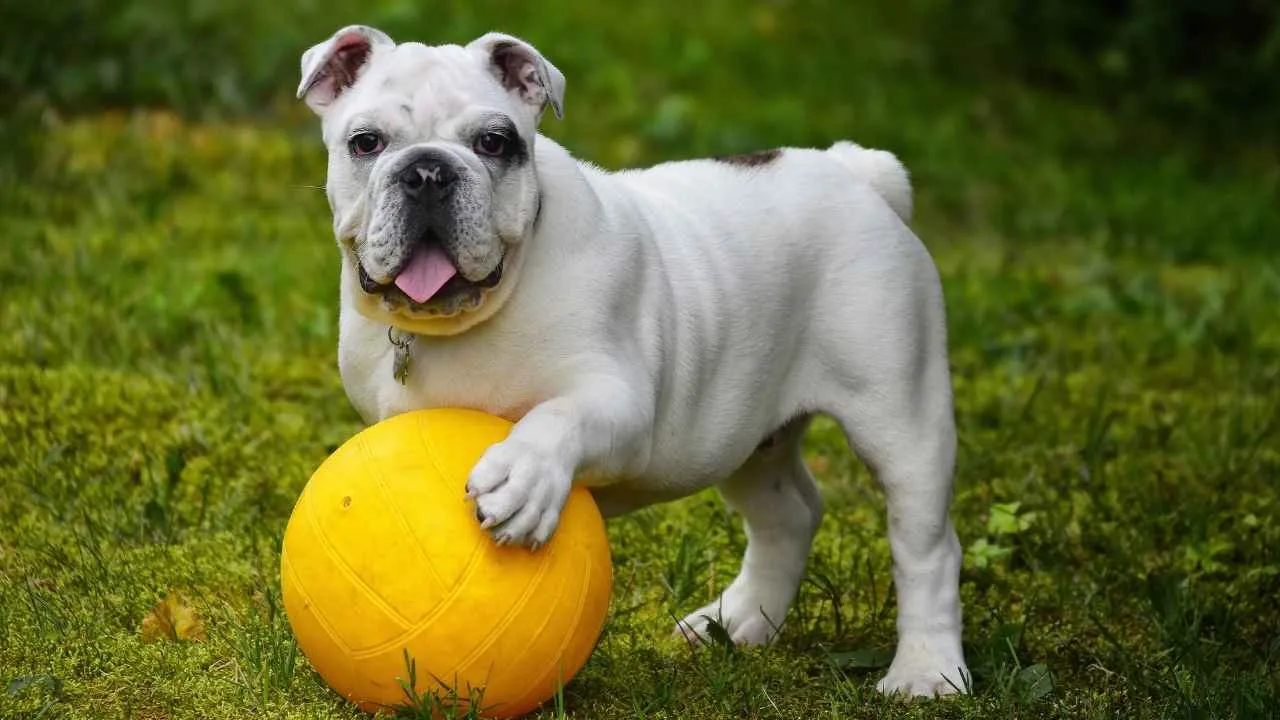
Lifespan: 8 to 10 years (shorter, but packed with personality!
The Bulldog, often called the English Bulldog, might just be the ultimate couch potato champion — with those iconic wrinkles and that adorable, snorting snuffle that sounds like a tiny chainsaw.
Although they stand only about 14–15 inches tall, Bulldogs are solidly built, weighing between 40 and 50 pounds. Known for their friendly nature, English Bulldogs can be excellent family pets.
But beneath that lovable face lies a breed known for needing a bit more health TLC than most. Their average lifespan is shorter than that of most medium-sized breeds, largely due to their unique physical characteristics, which make them prone to various health issues.
These charming snort-monsters are prone to major concern:
Respiratory issues (brachycephalic airway syndrome)
Hip and elbow dysplasia
Skin problems
Eye problems like Cherry Eye
Although English Bulldogs are generally calm, they can be curious in new environments and somewhat reserved around strangers. They show affection toward those they know and love. PetMD noted that Bulldogs typically aren’t excessive barkers or diggers, but when bored, they may develop destructive habits.
They might huff and puff like they’re training for a doggy marathon, but the truth is they need lots of love, proper vet care, and a comfy spot on the couch. Take care of their health, and you’ll be rewarded with endless snuggles and that unforgettable Bulldog swagger.
2. French Bulldog
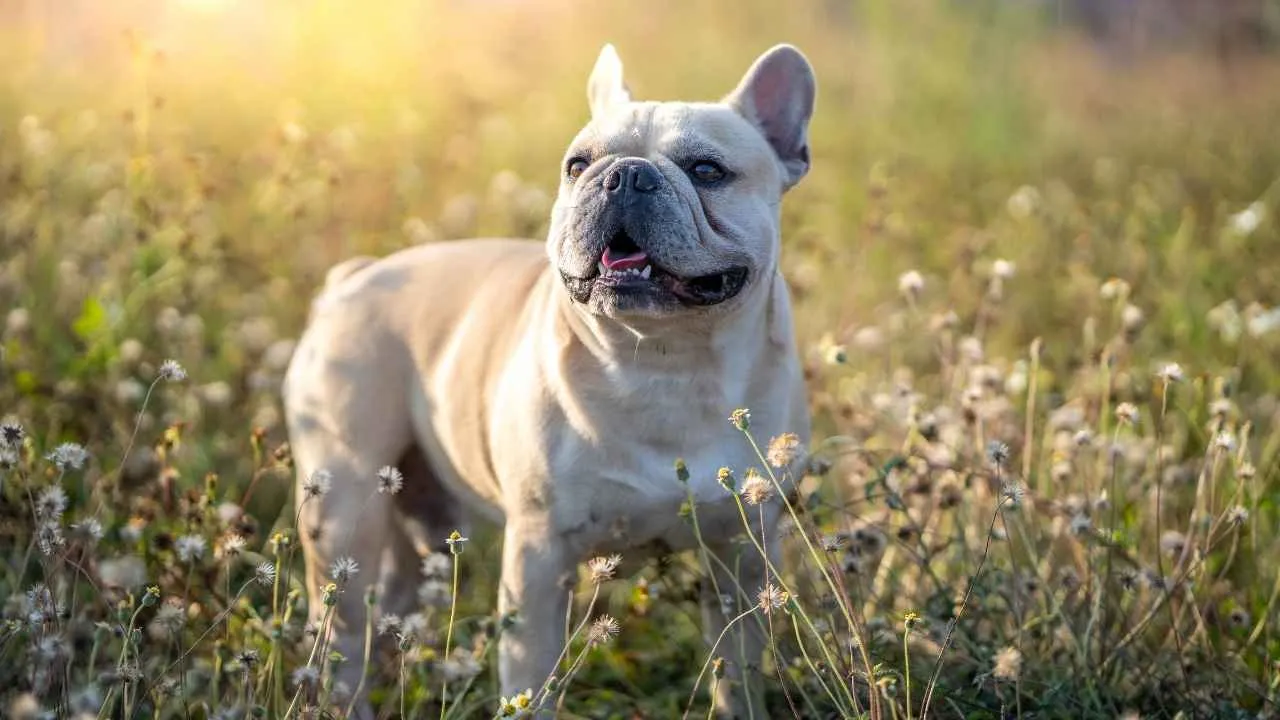
French Bulldog: 10 – 12 years (generally)
French Bulldogs are basically the celebrity puppies of the dog world — small, stylish, and impossible not to love. French Bulldogs, often called “Frenchies,” are easygoing, cheerful dogs that make affectionate companions.
According to the American Kennel Club (AKC), their friendly nature, lively personality, and small size have helped them become one of the most popular dog breeds in the U.S.

But those adorable smooshed faces come with some serious concerns to keep in mind:
Brachycephalic airway syndrome
Luxating patellas
Intervertebral disc disease (IVDD)
Frenchies have fun-loving, outgoing personalities—they’re smart, happy dogs who play well with others. With proper socialization, they typically get along nicely with most people and pets. They have a moderate energy level and enjoy social walks.
They might snore louder than your grandpa after Thanksgiving dinner, but with proper care, a healthy lifestyle, and plenty of vet love, these little muscle-heads can live comfy, cozy, and happy lives. Just be ready to give them a little extra TLC (and maybe a few ear rubs).
3. Irish Wolfhound
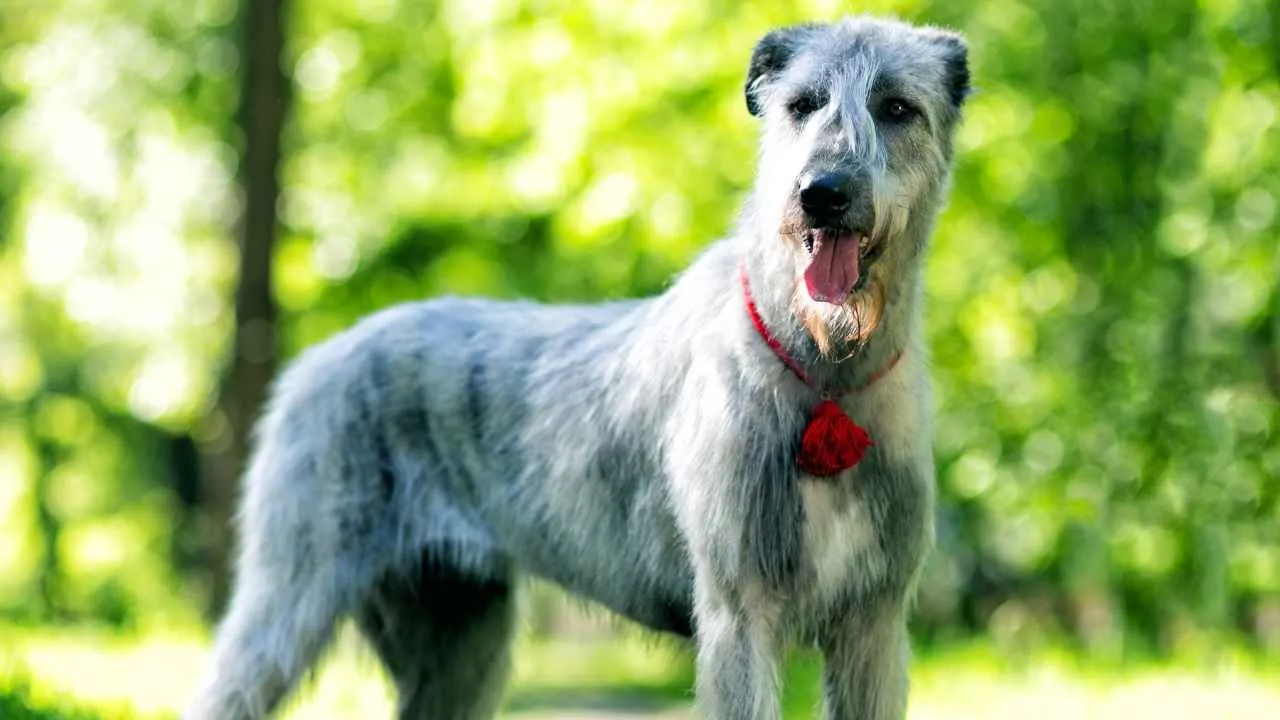
Lifespan: 6 – 8 years
If the Irish Wolfhound walked into a room, heads would turn — mostly because they’re the tallest dogs in the neighborhood (and possibly the gentlest giants).
Originally, they were bred to hunt wolves, protect people and livestock, and assist in battles. Today, the Irish Wolfhound has become a loyal and gentle companion. While their temperament doesn’t make them strong guard dogs, their impressive size often discourages strangers.
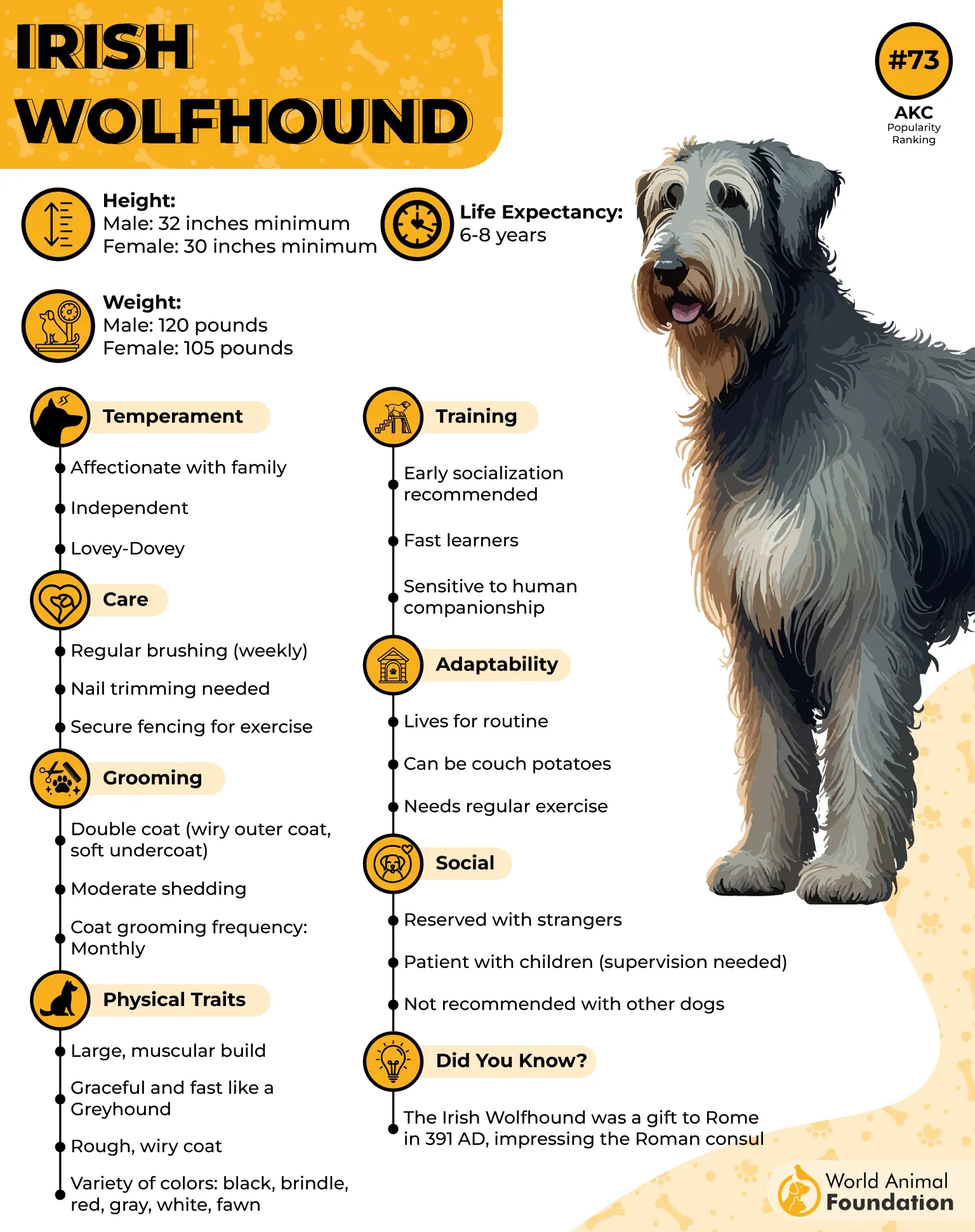
But with great size comes some not-so-great health problems:
Heart disease
Hip dysplasia
Liver-related conditions like a portosystemic shunt
WebMD says like many large breeds, they have only moderate energy levels. These towering sweethearts need regular checkups and a watchful eye to keep their hearts and hips in good shape. Treat them well, and you’ve got a loyal, majestic friend for life — who might occasionally forget they’re actually a giant!
4. Boxer
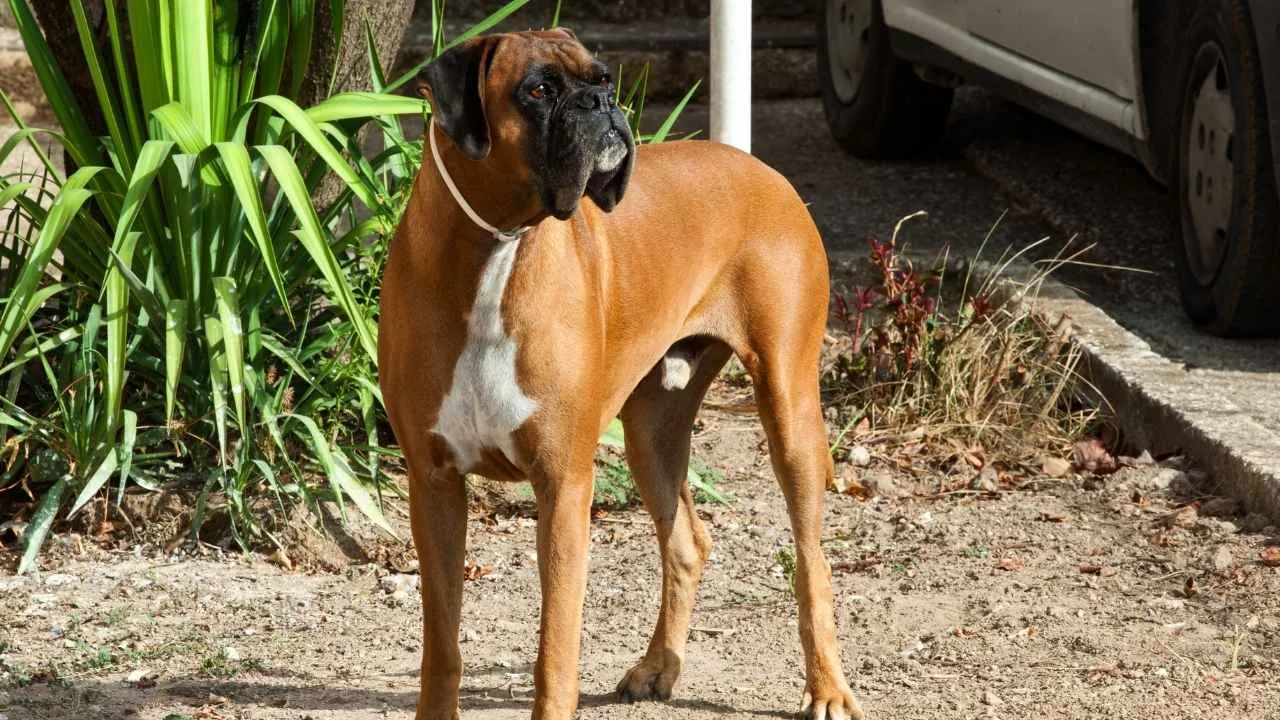
Lifespan: 10 to 12 years (not bad for a high-octane furball!)
Boxers were brought to the United States from Germany in the 1930s, where they were originally used for hunting. This background makes today’s Boxers excellent runners and playful jumpers.
They are deep-chested and typically well-muscled beneath their smooth coat. Boxers are a medium-sized breed, usually weighing between 65 and 80 pounds and standing about 21 to 25 inches tall.
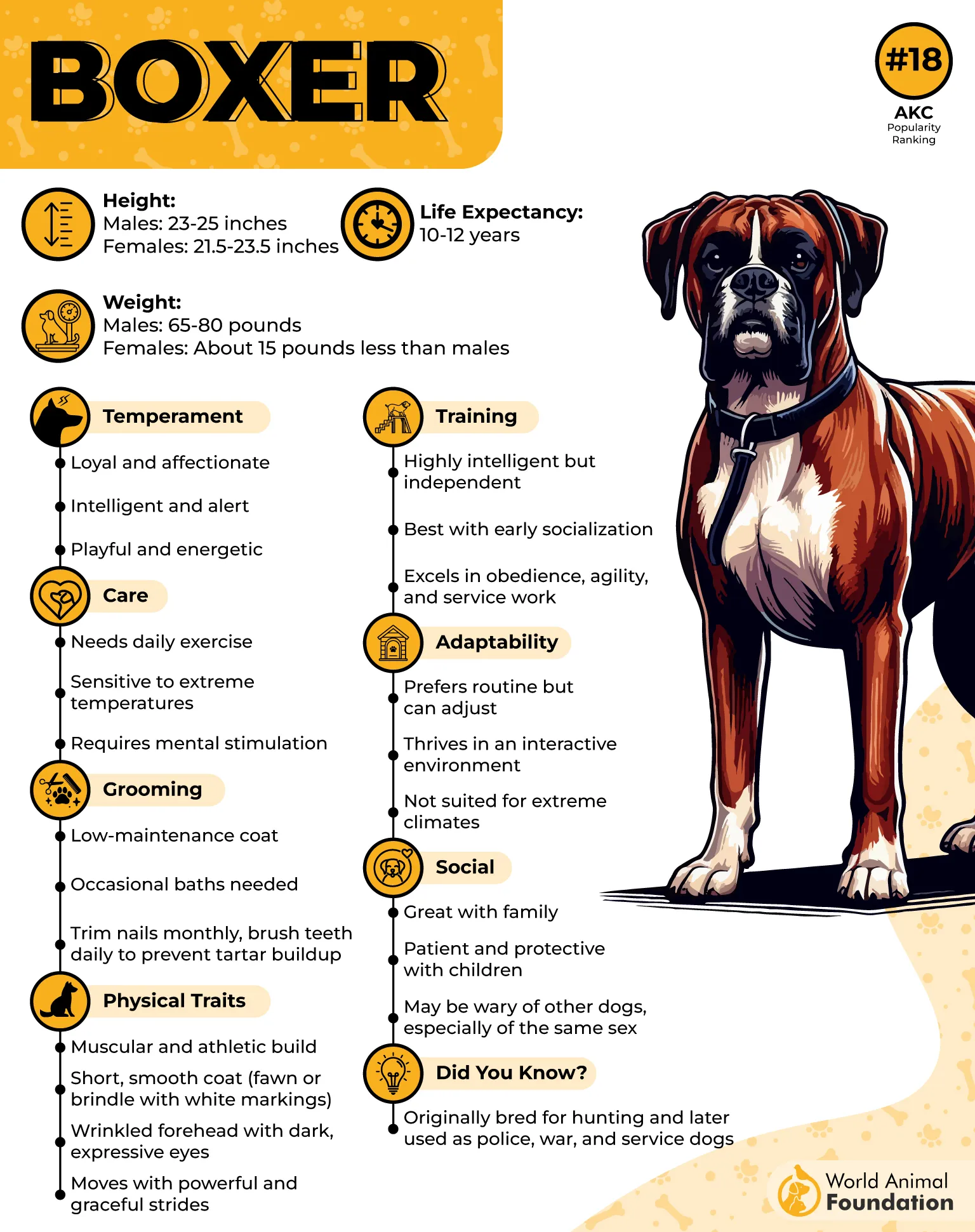
Boxers are like the class clowns of the dog world — full of energy, goofy grins, and boundless enthusiasm. But behind all that happy bouncing lies a breed that needs a little extra health TLC.
These playful pals are prone to a few health dramas:
Cancer (lymphoma, mast cell tumors)
Heart conditions (especially cardiomyopathy)
Hip Dysplasia
Bloat (gastric dilatation-volvulus)
Boxers are lively, playful dogs full of energy. They often jump and paw during play, so teaching them to stay grounded is helpful. Due to this jumping habit, Boxers might not be the best fit for families with young children unless they’re well trained to keep all four paws on the floor.
So while your Boxer might try to leap into your lap like a kangaroo on caffeine, keep an eye on their health with regular vet checkups and a watchful eye for any signs of discomfort. They’ll keep you laughing — and loving every minute.
5. Great Dane
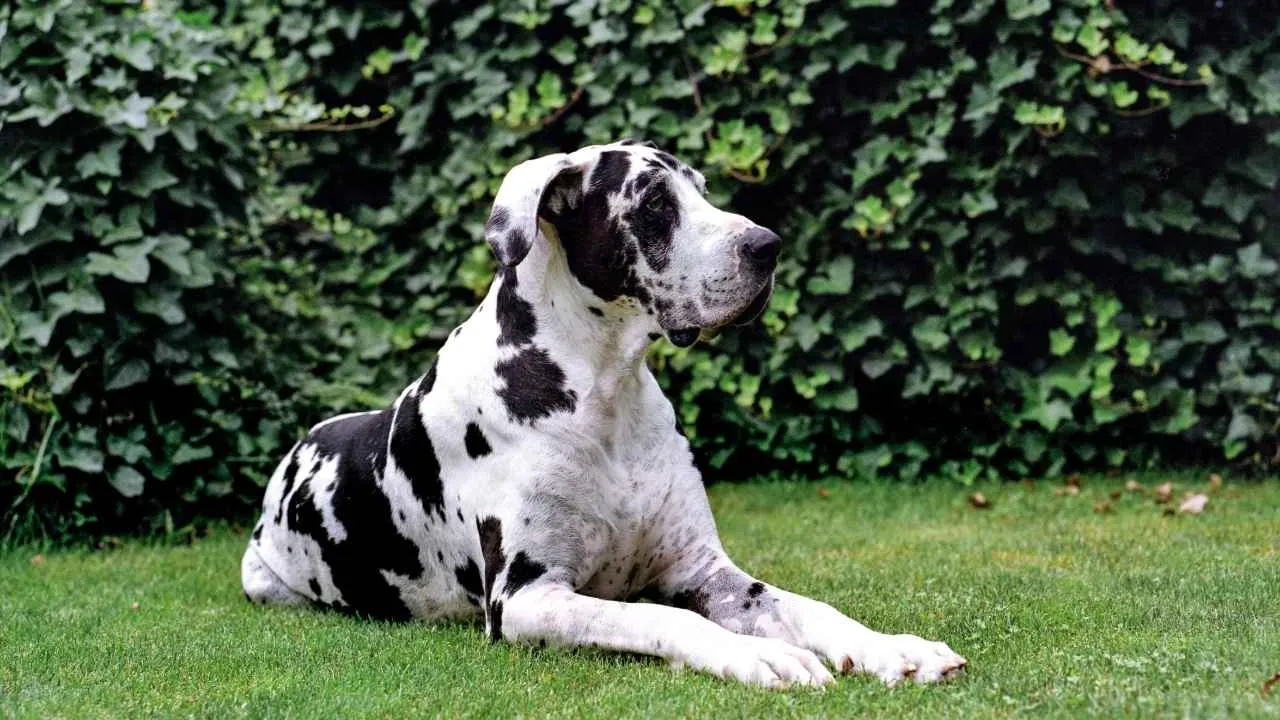
Lifespan: 7 – 10 years
Known as the “Apollo of dogs,” Great Danes are the tallest among working breeds and one of the largest dog breeds overall. Great Danes are the “big dogs” in every sense — majestic, gentle, and… prone to some heavyweight health issues.
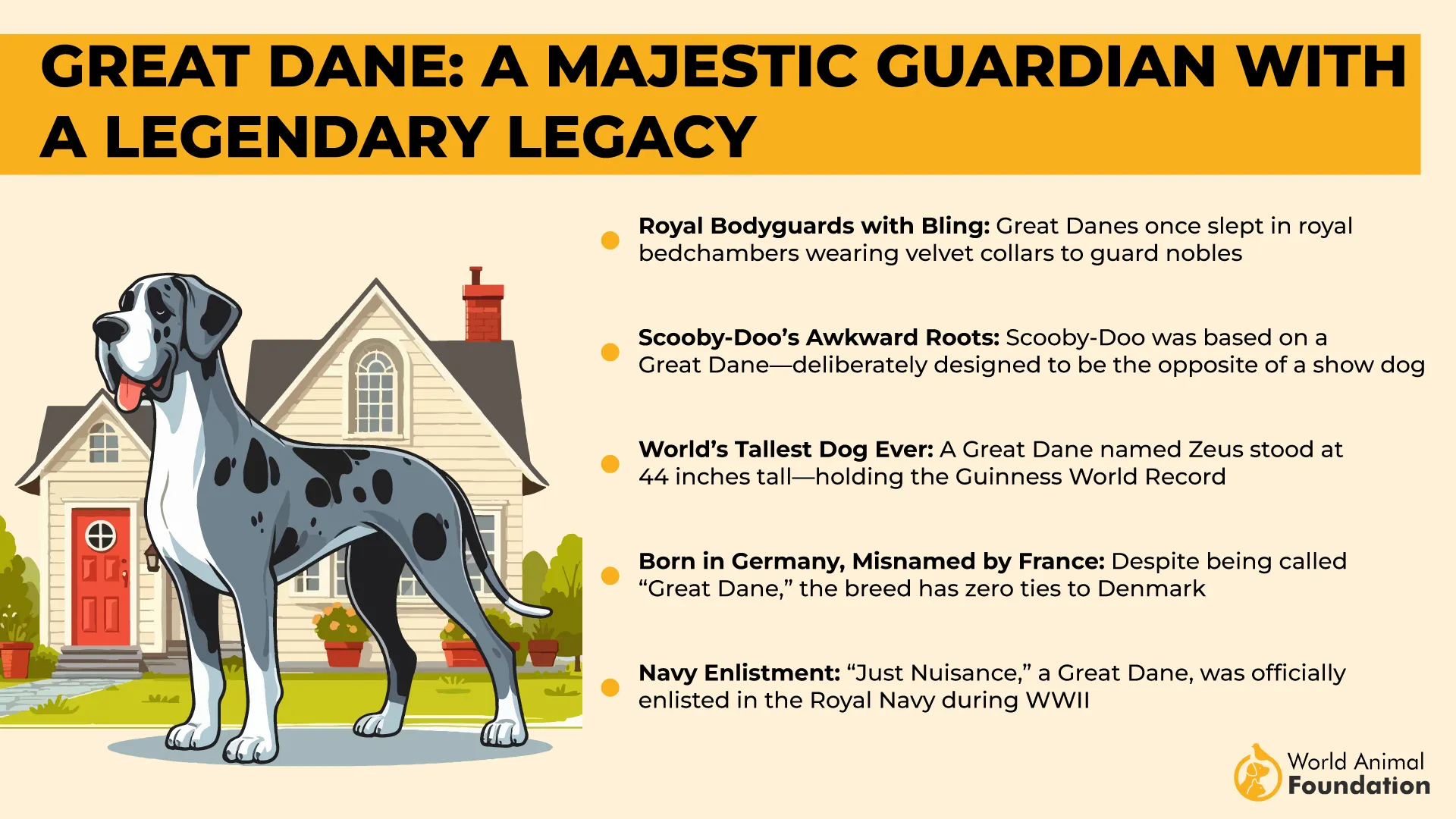
Great Danes typically stand between 28 and 32 inches tall. They’re also quite heavy, with average weights ranging from 110 to 175 pounds.

These giants may be royal in stature, but need a royal amount of care. Their health highlight reel includes:
Dilated Cardiomyopathy
Wobbler Syndrome
Stomach Dilation
Hip Dysplasia
Think of them as the friendly skyscrapers of the dog park — massive but delicate. Extra vet visits and careful monitoring will help your Dane stay majestic without the drama.
When trained and socialized early, they usually make great family pets and get along well with children. However, because of their size, interactions between Great Danes and kids should always be supervised.
6. Chinese Shar Pei
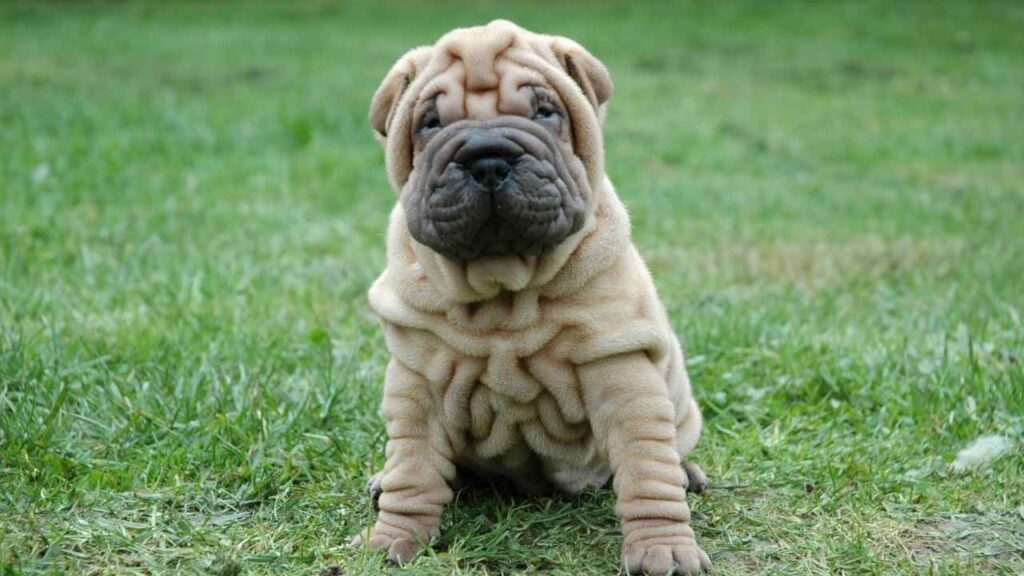
Lifespan: 8 – 12 years (varies)
If you love wrinkles so much you wish your dog looked like a tiny, furry accordion, the Chinese Shar Pei is your dream come true. Originally, Chinese farmers used Shar-Peis to guard and herd livestock. By the 1900s, they also served as boar hunters and home protectors.
As a medium-sized dog, Shar-Peis typically weigh between 45 and 60 pounds and stand about 18 to 20 inches tall at the shoulder.
Today, Chinese Shar-Peis are loyal companions, but like all breeds, they require consistent training to develop good behavior around strangers, other animals, and children.
But behind all those adorable folds lies a health checklist longer than their signature skin wrinkles. These squishy-faced charmers aren’t just cute—they come with a bundle of health concerns that demand some serious attention:
Skin allergies
Entropion
Hip Dysplasia
Cataracts
Hypothyroidism
Megaesophagus
Shar Peis need regular vet visits, a gentle skincare routine, and lots of love (plus patience for all those vet appointments).
Purina says they are loyal and can be playful and energetic, but they often tend to be somewhat aloof. Without proper training from a young age, they may also become stubborn and territorial.
With proper care, they’ll keep being the squishiest, most loyal wrinkly companions you could ask for — just don’t forget their health needs, or those wrinkles might come with some unwanted surprises!
7. Rottweiler

Lifespan: 8 to 10 years (shorter than some of the fluffier furballs, but hey, quality over quantity, right?)
Ah, the Rottweiler — a dog that looks like it could bench press a car but secretly battles some not-so-tough health villains.
Rottweilers are a large breed featuring a broad head, short coat, and widely spaced eyes. As part of the working group, they are believed to descend from ancient Roman mastiffs. Today, they are among the most popular dog breeds in the U.S.
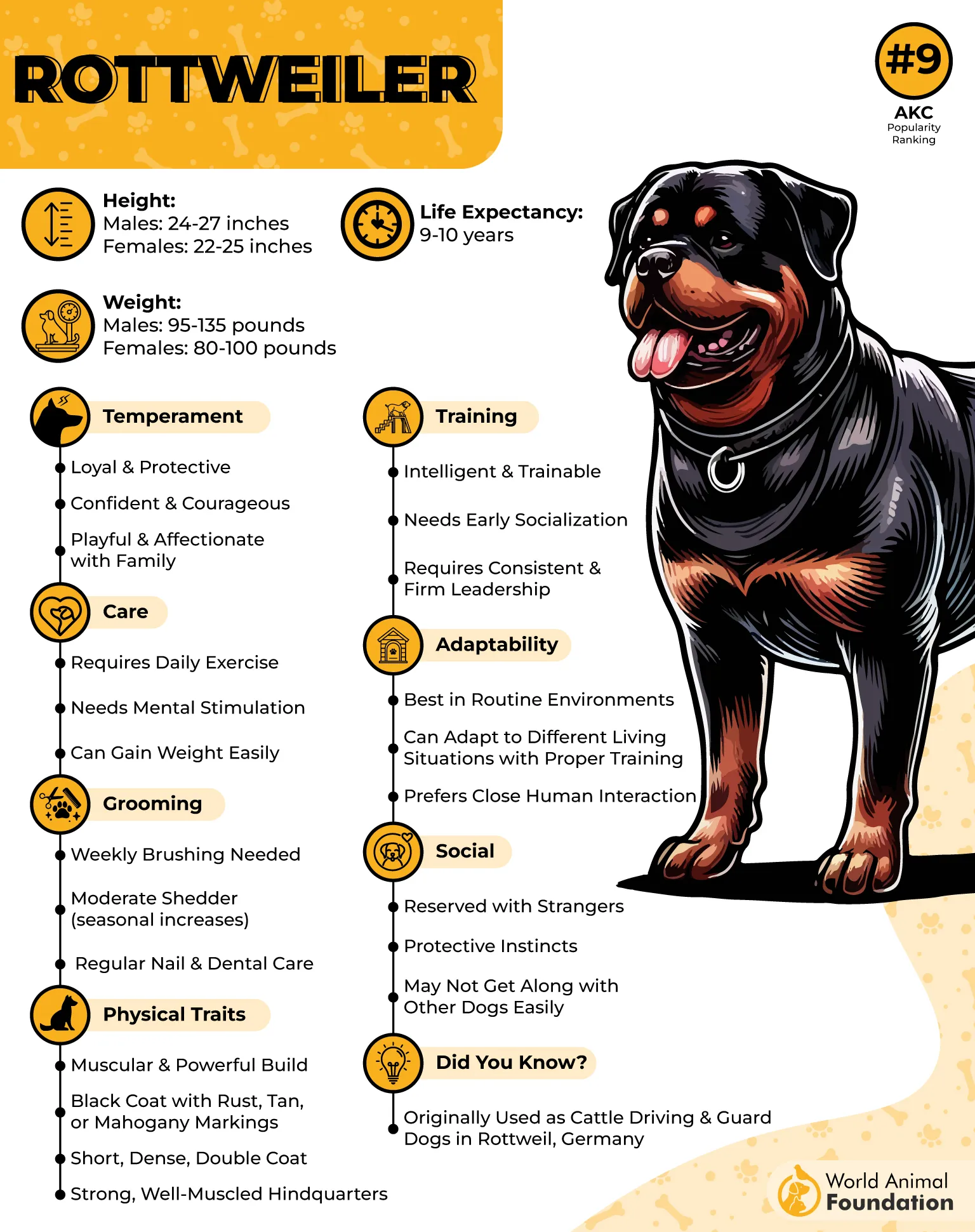
They typically stand between 22 and 27 inches tall and weigh from 80 to 135 pounds, with females generally being smaller than males. These big-hearted, big-bodied dogs are basically the gentle giants of the canine world… with a few quirks that require extra TLC.
Hip and Elbow Dysplasia
Osteochondritis Dissecans (OCD)
Dilated Cardiomyopathy (DCM)
Rotties are like those friends who always want to hit the gym but then need a smoothie and a nap afterward.
Regular vet check-ups are a must — think of them as the “spa days” for your dog’s health. A balanced diet? Absolutely. No sneaking extra bacon bits here (sad face). And controlled exercise — let’s keep the marathon runs to a minimum and focus on slow, steady walks and playtime.
Because let’s be honest: They might look tough, but they want to be your couch cuddle buddy with just the right amount of activity. Take care of their health, and your Rottweiler will reward you with loyalty, goofy grins, and the occasional slobbery kiss.
Conclusion
The unhealthiest dog breeds that require extra care often face serious health concerns, from chronic ear problems and ear infections caused by bacterial and yeast infections to breathing problems, joint problems, and digestive issues. Breeds like the Cavalier King Charles Spaniel, prone to mitral valve disease affecting the heart’s ability to pump blood effectively, and large dog breed like Bernese Mountain Dogs, which may develop mast cell tumors, require lifelong management and routine vet visits.
Golden Retrievers can suffer from progressive retinal atrophy, collie eye anomaly, and other vision problems, while large dog breeds may experience excess weight, joint problems, and life-threatening conditions if not kept at a healthy weight.
Poor breeding practices versus responsible breeding practices play a major role in reducing health issues, with selective breeding sometimes leading to neurological conditions, immune system weakness, and hair loss. Mixed breeds may have fewer problems, but early screening, early diagnosis, and early detection are vital for maintaining overall health.
Conditions such as diabetes, weight gain, or severe cases of stomach fills can require lifelong treatment, veterinary treatment, and pet insurance. Hot or humid conditions can worsen a few issues, making careful monitoring of early signs crucial for a healthy life.


